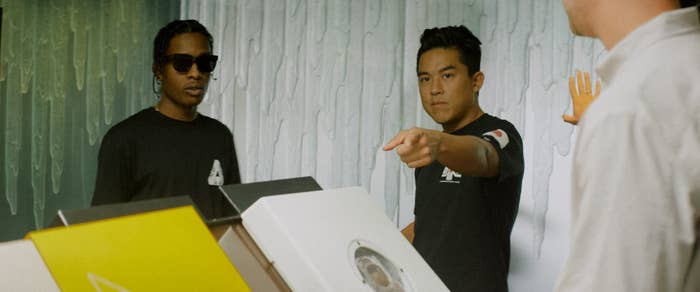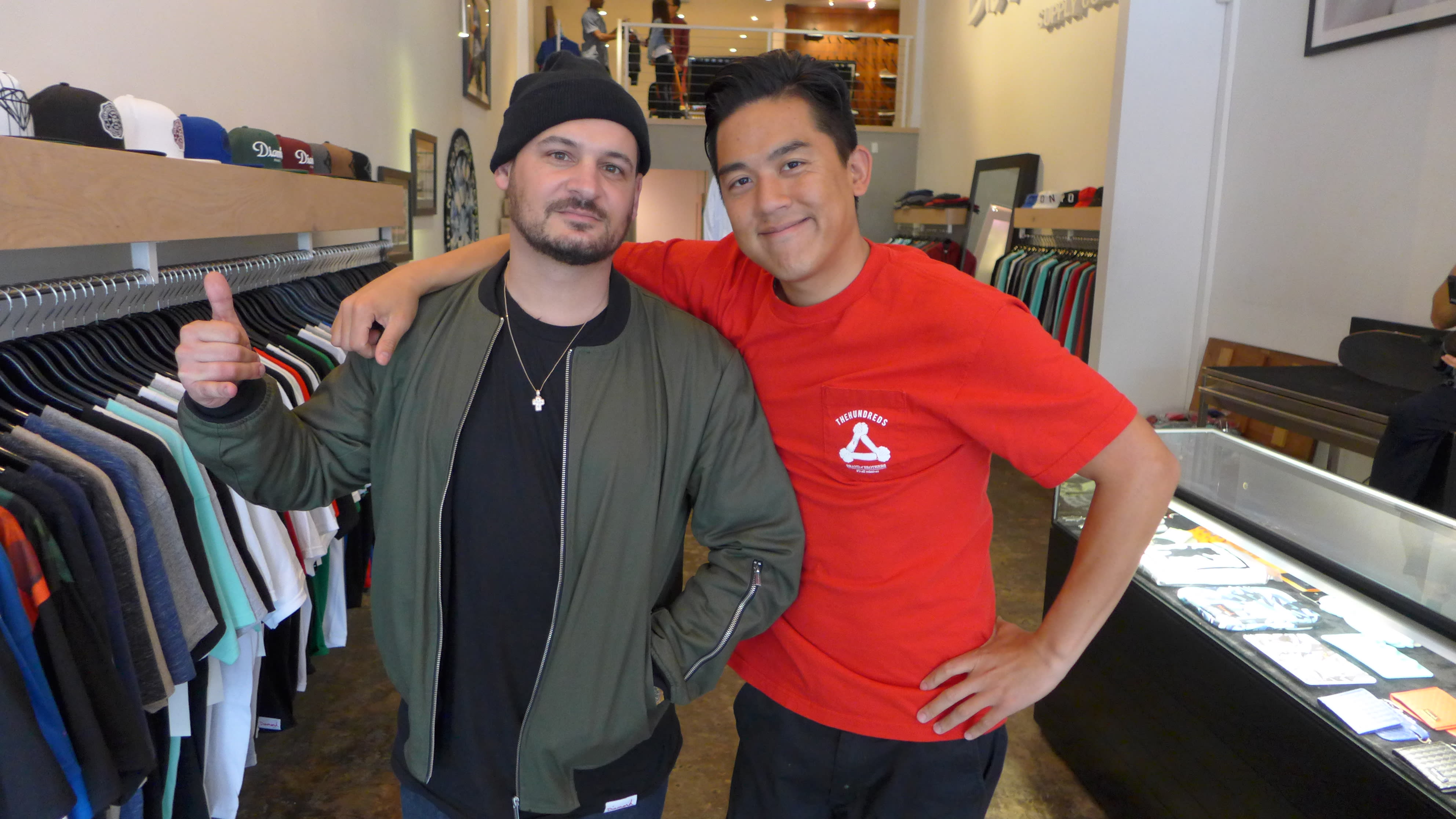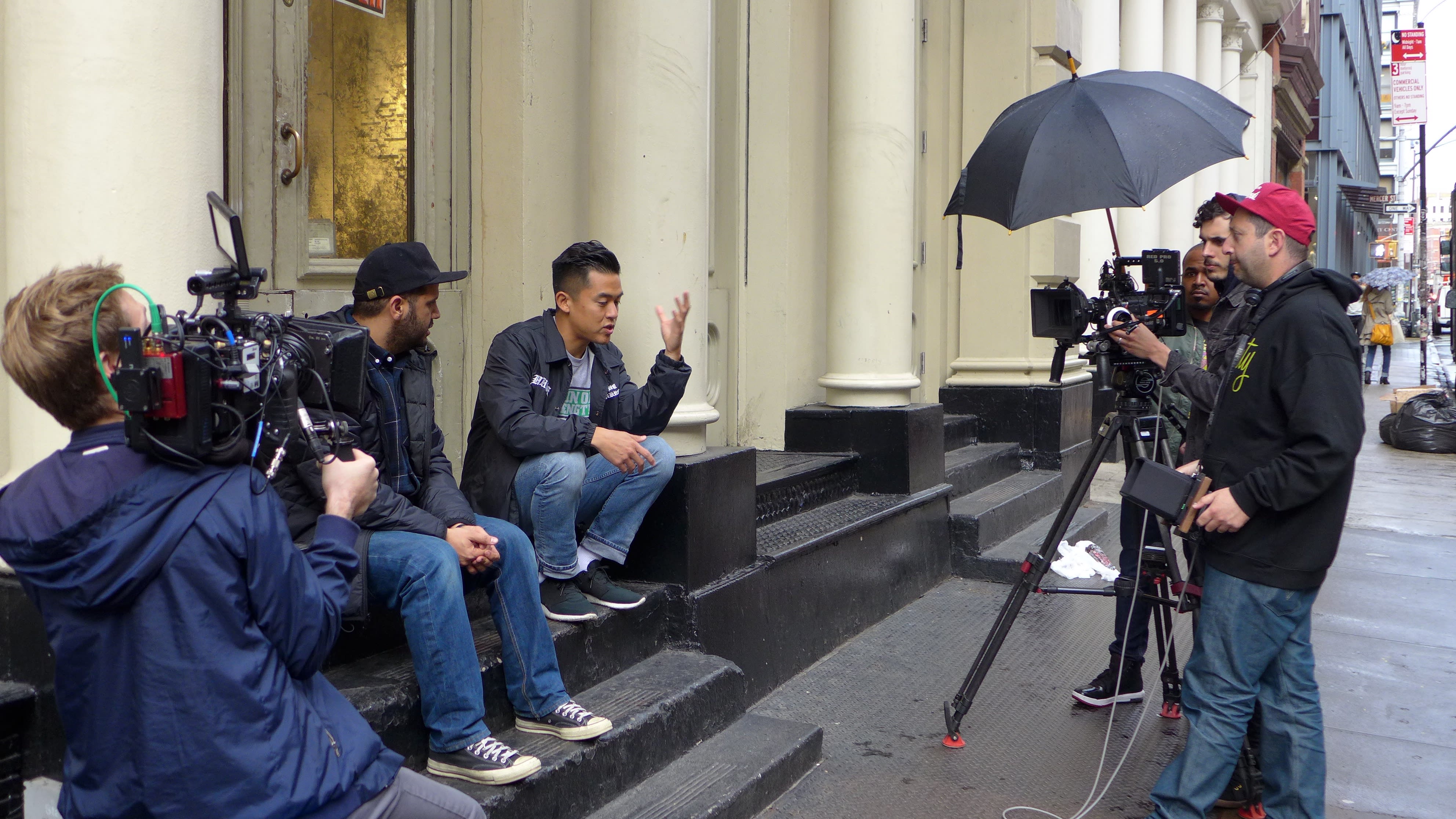Last November, during a panel at the first-ever ComplexCon, Bobby Hundreds announced he was releasing a documentary about streetwear. The film, titled Built to Fail, was directed by Bobby, Alexis Spraic, and Scott Weintrob. Bobby, the co-founder of The Hundreds, tries to explain what—and more importantly, who—is streetwear with help from some of the key players in the industry, including Jeff Staple, Tommy Hilfiger, ASAP Rocky, Rick Klotz, Leah McSweeney, and more.
Built to Fail is set to premiere at the Los Angeles Film Festival this weekend. Here, Bobby reveals what it was like working on the documentary and how the project came about. Watch the exclusive trailer above.

It feels like I’ve been working on Built to Fail forever, but it was more or less six years ago that the idea crept into my head. I had just come off writing my “50 Greatest Streetwear Brands” list for Complex in which I ranked three generations of streetwear labels from around the world. The curation itself wasn’t hard. It was just my opinion, after all, and another clickbaity list. The tricky part was setting the standard. How do you define streetwear? After 14 years of building my own brand, The Hundreds, I saw the “streetwear” label get twisted and turned by the media and mainstream, applied to clothing genres from heritage sportswear to modern athleisure. The bigger streetwear gets, the harder it is to pin down. Today, streetwear is the hottest hashtag in style, youth culture, and music, but no one agrees on what it means or where it came from.
Imagine how frustrating that can be. You dedicate your life to something and yet don’t know what it is. The internet is of little assistance—the blogs focus on streetwear du jour and rarely reflect on the roots. The comments threads erupt into, “This is what I think it is.” But I wanted objective facts. It doesn’t help that the men and women who laid the bricks purposefully kept it a secret. In its inception, streetwear thrived off the grid, in the shadows of mainstream fashion and corporate brands. Outside of oral history, there’s been little recorded by blogs or media. There’s never been a documentary on the subject, although many filmmakers have tried. And so, that Complex list inspired a new mission: travel the world, track down the pioneers and the key players, and ask them what—and more importantly, who—streetwear is, on tape.
I assumed funding would be the easy part, but I was in for a rude awakening. I canvassed Hollywood for two years, from fancy dinners to conference rooms to studio backlots. Every meeting closed with the same boxed response: “There’s no money in documentaries, let alone fashion docs.” Here I was, targeting a demo that burns its savings on sneakers and T-shirts, while investors worried about selling movie tickets.

Eventually we found someone who fucked with the vision, but not before I asked streetwear’s architects for their co-operation. A big part of making a movie like this is credibility and I knew it’d help to get the right names onboard. This was one of the hardest parts about making this film—massaging streetwear egos, getting them on the same page, and most difficult of all, convincing them to work together. Almost everyone had his or her own idea of how a streetwear documentary should play out and who must be represented. If you think about it, this is the most streetwear characteristic of all: the bravado and egotism are exactly what make us stand apart and succeed, but it can hinder and destruct. “I’m not gonna be in it if that guy’s in it!” or “I’ll only be in it if he’s in it…” It’s a miracle that we rounded as many prominent names in this movie as we did. Futura, Rick Klotz, Leah McSweeney, ASAP Rocky, Hikaru. I call it the greatest streetwear collaboration of all time.
Of course, there were those who refrained. For some, streetwear is still a dog-eat-dog marketplace, and their participation would show support for their competitors—whether it was rival brands or specifically me. In their eyes, my very involvement flagged a conflict of interest. Even though this film falls outside the scope of The Hundreds, some saw it as a branded movie, and the politics got in the way. There was something else, also. It’s not that many of the OGs didn’t want to go on camera. They couldn’t. Perhaps their brand and personal identity were misaligned (they were off-brand, aged-out or uncool, and wanted to hide from their audience). For most others, streetwear had come and gone in their lives, leaving a bad taste. To discuss the brands they founded was a sore subject (they were squeezed out or forced to sell under duress). I get it. Nobody wants to immortalize their break-ups on the big screen, let alone be interrogated about it.
Near the start of production, I remember pointing the camera towards Jeff Staple in The Reed Space. Right off the bat, I asked him, “What do you think about a streetwear documentary?” He laughed, “You’re crazy!” Although the movie is entitled Built to Fail in reference to the tug-of-war between art and commerce, the notion of a streetwear documentary itself is also devised to crash and burn. To showcase everyone’s voice is impossible. There’s a 90-minute film here to discuss over three decades of stories, and that’s just from the brand point-of-view. What about the retailers, the media, and the customers? How far do I go into skate and surf, and how much do I delve into sneakers and rap merchandise? Now compound these elements from city to city, as each country has its own streetwear origins, heroes, and DNA. There’s a reason why there has never been a comprehensive documentary that covers the breadth of streetwear. It simply can’t be done.

And the truth is, very few people are willing to sit through a clinical History Channel breakdown of streetwear. This documentary could have easily veered into a factual timeline of Al Bundy anecdotes. Instead, over the course of production, Built to Fail became less about what happened and more about how and why streetwear happens. It’s about what it’s like to actualize your passion, lose it to the world, and the deafening emptiness that follows success. How do you sell without selling out? Can you go mainstream and stay authentic? These are the universal questions that all streetwear brands ask of themselves, without any right answers.
Instead of mapping the narrative as I did with the Complex list, I let the interview subjects guide the ship. Along with my co-directors Alexis Spraic and Scott Weintrob, we asked each pioneer, designer, and brand the same question: “What is streetwear?” More specifically, who is streetwear? Nick Tershay of Diamond Supply Co. pointed me to Tommy Hilfiger. Tommy directed me to Russell Simmons. Russ to Alyasha Owerka-Moore.
From L.A. to Tokyo to New York City, the story transcended apparel and became an exploration of culture. I knew that there would be some variance in opinions, but shockingly, everyone had their hot take on streetwear history. I thought all would concur that Shawn Stussy was the author, but on the west coast, some answers wandered deeper into 1970s surf counterculture with Peter Schroff and Craig Stecyk. On the east coast, I heard a lot of ‘90s brands like PNB, Pervert, and Phat Farm. If you grew up in Japan, streetwear started with Hiroshi Fujiwara and Nigo. And since the term “streetwear” didn’t circulate as a media device until the mid-2000s, some people like Mega of Black Scale contended that this is when streetwear began.
STREETWEAR without culture is fashion.
Every profile could have unfurled into its own documentary. All of these personalities carry such complicated storylines, their own paths to success and failure. I remember following Tommy Hilfiger around his massive New York design studio, chasing him up floors of office space staffed with thousands of designers and salespeople weathering a busy fashion week. In the quiet of his corner office, he confidently claimed, “I invented streetwear.” I leaned in and asked him to elaborate. He said Russell Simmons told him so. Back in Los Angeles at All Def Digital, I asked Russell about this and he verified. Then he unleashed a tirade against Macy’s and department stores for draining streetwear. He said I could only include his interview as long as I kept that part in the movie. It was a truth he’d been dying to say on record for years.
ASAP Rocky is of the next generation that can see both sides of streetwear history—its indie T-shirt roots to the high-fashion runway. He doesn’t have a lot of time to talk—we’re chilling in the Taschen bookstore’s private room upstairs—but he takes a beat to argue that most of us (brands like mine, brands from our class) blew it by selling out or losing authenticity. He prefers to discover and wear that hard-to-find shit like the Palace tee he has on. I can’t argue with that. Sure, Palace is streetwear and so is Rocky’s logic. It’s all streetwear, really.

What I learned is that streetwear is the stories, the people, and the community. There’s not one signature aesthetic or brand that embodies streetwear. You can’t look at streetwear in a vacuum, you have to consider the whole: the generations, the geography, the history and attitude. You can’t appreciate streetwear without the lifestyle. Streetwear without culture is just fashion.
In the end, this film was about making sure the story got told, as much as it may get dissected, critiqued, or maligned. I can stomach the hate as long as people are talking about the who and why. Hopefully this just moves us closer to the truth. As a fan and contributor, it is important for there to exist a historical record of this phenomenon—a special moment in time that has not only marked my life, but that of millions. From customer to creator, streetwear is built on the backs of dreamers, innovators, leaders, and iconoclasts. I want us to be able to show this to our grandkids one day and say, “We did this.” To tell the world, “We existed.”

